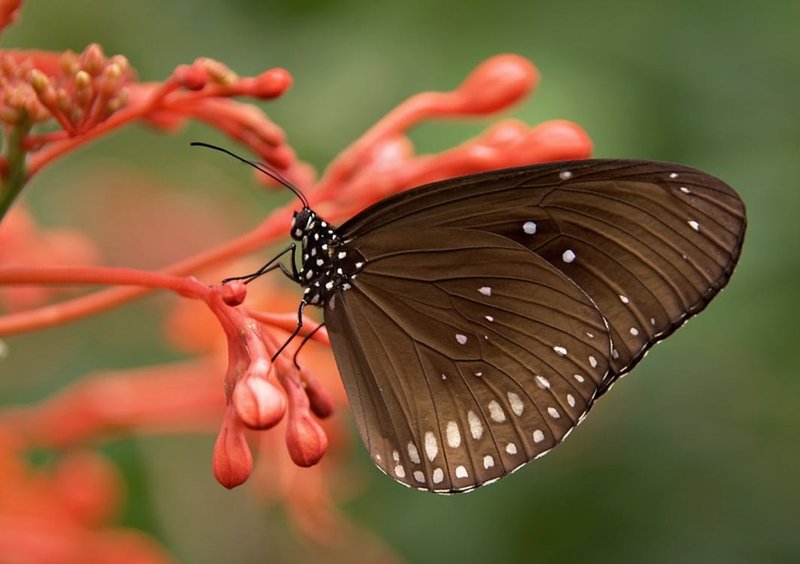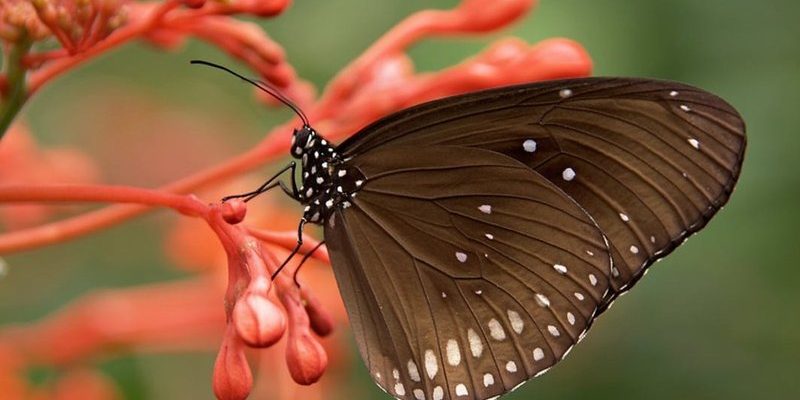
Butterflies are often seen as symbols of transformation and hope. You can think of them as nature’s little fairy tale characters, starting their journey as humble caterpillars before undergoing a magical change to become the breathtaking creatures we admire. Now, let’s explore some amazing facts that make butterflies so unique.
1. Metamorphosis: The Ultimate Transformation
One of the most remarkable aspects of butterflies is their metamorphosis. This process involves four stages: egg, larva (caterpillar), pupa (chrysalis), and adult butterfly. By the time you spot a butterfly fluttering about, it has gone through an extraordinary transformation.
Here’s how it works: a female butterfly lays eggs on a host plant suitable for caterpillars. Once the eggs hatch, tiny caterpillars emerge and begin munching on leaves. They grow rapidly, shedding their skin multiple times. When they’re ready, they form a chrysalis, a protective casing where the real magic happens. Inside, their bodies break down and reassemble into the beautiful butterfly. Isn’t that just mind-blowing?
2. Hundreds of Species, Endless Beauty
There are about 17,500 species of butterflies worldwide, each showcasing stunning colors and patterns. From the vibrant Monarch to the delicate Swallowtail, butterflies come in a dazzling array of designs that serve various purposes, such as attracting mates or warning predators.
When you see a butterfly, its colors signal different things. Some butterflies have bright, bold hues to frighten predators, while others have soft colors for camouflage. The variety among butterfly species is a reason why they are so beloved by nature enthusiasts and photographers alike. Imagine how many different butterfly species there are fluttering around in your own backyard!
3. The Role of Butterflies in Pollination
Butterflies play a crucial role in our ecosystems as pollinators. While sipping nectar from flowers, they transfer pollen from one bloom to another, facilitating the reproduction of plants. Without these little creatures, many plants would struggle to reproduce, which means fewer fruits, vegetables, and flowers for us and other wildlife.
Here’s the thing: when butterflies visit flowers, they don’t just benefit the plants; they help maintain biodiversity in their habitats. So, the next time you see a butterfly enjoying some nectar, think of it as a tiny gardener helping nature thrive!
4. They Can Taste With Their Feet
Yes, you read that right! Butterflies can actually taste with their feet. When they land on a plant, they use sensory receptors on their legs to determine whether it’s a suitable place to lay their eggs. These receptors help them identify if the plant is nutritious enough for their caterpillars.
This unique ability lets butterflies ensure that their next generation has the best chance of survival. Imagine walking into your kitchen and being able to taste the food just by stepping on it! It’s a strange but fascinating way that butterflies interact with their environment.
5. Butterflies Have a Short Lifespan
Despite their beauty, butterflies have surprisingly short lifespans. Most adult butterflies only live for about 2 weeks to a month, while some species may last for several months. However, this varies widely depending on the species and environmental factors.
You might wonder how they can make such an impact in such a short time. Well, butterflies are expert navigators, traveling long distances during migration, as seen in the Monarch butterfly’s incredible journey across North America. Their fleeting presence serves as a reminder of the beauty and fragility of life.
6. Colorful Wings: More Than Just Looks
Butterfly wings aren’t just visually stunning; they’re also functional. The wings are covered in tiny scales, which create the intricate patterns and colors we admire. These scales can reflect light in different ways, allowing butterflies to blend into their surroundings or catch the eye of a potential mate.
Additionally, the colors on their wings can serve as thermoregulators, helping butterflies maintain their body temperature. Some species can even change colors to help with camouflage. Isn’t it fascinating how their wings play such a crucial role in their survival?
7. Migration: A Journey of Thousands of Miles
Some butterflies, like the Monarch, undertake remarkable migratory journeys. Monarchs travel thousands of miles from North America to Mexico each winter. They navigate using the sun and the earth’s magnetic field, showcasing a level of instinct that’s both mysterious and impressive.
This migration is not only a survival tactic but also a crucial part of their life cycle. The journey can take multiple generations of Monarchs to complete, highlighting the resilience and perseverance of these lovely insects. Picture tiny butterflies traveling across countries—what a beautiful testament to nature’s wonders!
8. Butterflies and Climate Change
Unfortunately, butterflies are affected by climate change. Changes in temperature and habitat loss threaten their populations. As their habitats alter, butterflies must either adapt, migrate, or face decline.
Conservation efforts are underway to protect these delicate creatures, but it’s essential for us to raise awareness and create butterfly-friendly habitats. Planting native flowers and reducing pesticide use can go a long way in helping butterflies thrive. When we take action, we contribute to the survival of these remarkable beings.
9. Cultural Significance of Butterflies
Butterflies hold various meanings across different cultures. In many places, they symbolize transformation, hope, and beauty. For instance, in Japanese culture, butterflies are seen as the souls of the deceased, while in some Native American traditions, they represent change and joy.
These cultural connections show how deeply butterflies resonate with human experiences. Just as they undergo transformation, we too relate to their journey of growth, reminding us of the beauty in change.
10. How to Attract Butterflies to Your Garden
If you want to incorporate butterflies into your life, consider creating a butterfly-friendly garden. Here are some simple tips:
- Choose a variety of native plants that bloom at different times to provide a continuous food source.
- Include host plants for caterpillars, like milkweed for Monarchs.
- Eliminate pesticides to create a safe environment for butterflies.
- Provide water sources like shallow dishes or stones.
By following these steps, you’ll not only attract butterflies but also create a vibrant ecosystem right in your backyard.
In conclusion, butterflies are so much more than just pretty insects fluttering about. Their fascinating life cycles, crucial roles in ecosystems, and cultural significance reveal how remarkable they truly are. By valuing and protecting them, we nurture the delicate balance of nature and ensure that future generations can enjoy their beauty. The next time you see a butterfly, take a moment to appreciate the incredible journey they’ve taken, and maybe even reflect on your own transformations!

